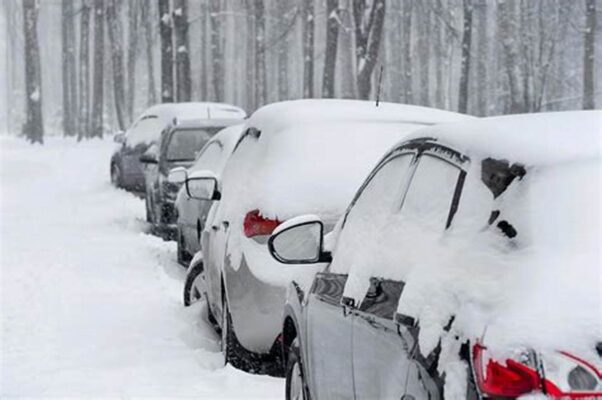Driving in snow can be a daunting experience for many, yet it is an unavoidable reality in regions with harsh winters. This article will provide valuable tips for driving in snow, ensuring that you feel confident and prepared when faced with icy roads and falling flakes. By understanding the challenges of winter driving and employing proven strategies, you can reduce the risks associated with inclement weather and navigate snowy conditions safely.

Understanding the Challenges of Winter Driving
Before we dive into specific tips for driving in snow, it’s crucial to understand the unique challenges that winter weather presents.
Snow impacts visibility, traction, and road conditions, making it essential for drivers to adapt their techniques accordingly. The following sections will explore these challenges and how to overcome them effectively.
The Effects of Reduced Traction
When driving on snow-covered roads, reduced traction is one of the largest obstacles to safe navigation.
The friction between your tires and the surface diminishes, causing your vehicle to slide or skid. This affects acceleration, braking, and steering, leading to unpredictable handling.
To counteract this, it’s important to equip your vehicle with appropriate tires designed for winter conditions. Winter tires have specialized tread patterns and rubber compounds that enhance grip on ice and snow. Investing in high-quality winter tires can dramatically improve performance during the cold months.
Maintaining proper tire pressure is another crucial aspect. Cold temperatures cause air to contract, potentially leading to under-inflated tires. Make it a habit to check your tire pressure regularly in winter, ensuring they are inflated according to manufacturer recommendations. This simple step can make a significant impact on your vehicle’s handling and overall safety.
Visibility Challenges in Snowy Weather
Visibility often plummets in snowy conditions, creating another layer of difficulty for drivers.
Falling snow can obscure your view of the road ahead, while snow accumulation on your windshield and windows can further hinder visibility.
To address this challenge, ensure that your wipers are in good condition and that you always keep your windshield clean. A well-functioning defroster is vital for keeping the glass clear, allowing you to see potential hazards on the road ahead.
Additionally, consider using headlights even during the daytime. Many drivers assume that headlights are only necessary at night; however, in snowy weather, they enhance your visibility to other motorists while allowing you to see better through falling snow.
It’s also wise to familiarize yourself with the various lights on your dashboard. If warning lights illuminate unexpectedly, it could indicate an issue related to traction control or braking systems, prompting immediate attention.
Road Conditions and Their Influence
Road conditions can vary dramatically when snow accumulates, which can lead to treacherous situations if not managed properly.
Snowfall creates different surfaces ranging from packed snow to sheer ice, each requiring distinct driving approaches.
First, recognize the type of road surface you’re dealing with. For instance, if you encounter packed snow, maintain a steady speed and avoid sudden maneuvers, as these can result in loss of control. In contrast, black ice—often invisible and particularly dangerous—requires extreme caution. Reducing speed and staying alert for changes in your surroundings can help you navigate these tricky areas.
Another critical factor is the presence of other vehicles on the road. It’s essential to increase your following distance significantly in snowy conditions. When traveling behind another vehicle, aim for eight to ten seconds of separation to afford sufficient time to react in case of sudden stops or skids.
Preparing Your Vehicle for Winter Driving
As winter approaches, preparing your vehicle becomes paramount to ensure safety while driving in snow.
Not only does preparation involve mechanical checks, but it also requires some strategic planning. Below, we’ll explore several key components to focus on before hitting the roads.
Checking Your Battery and Electrical System
Cold temperatures can significantly impact your battery’s performance.
A weak battery can leave you stranded when you need your vehicle the most, especially during frigid days when starting issues are more common.
To prevent this, get your battery tested prior to winter. Most auto shops offer free battery assessments, so take advantage of this service. If your battery is nearing the end of its lifespan or showing signs of weakness, consider replacing it before harsher weather strikes.
In addition to the battery, inspect all electrical components, including lights and wipers. Ensuring that everything functions properly aids in visibility and enhances safety during snowy conditions.
Tire Preparation
As previously mentioned, having the right tires is essential for winter driving.
Beyond simply purchasing winter tires, regular maintenance should also be a priority.
Examine the tread depth—tires should have at least a quarter-inch of tread to maintain traction in snow. If they appear balding or worn down, it might be time for a replacement. Additionally, consider rotating your tires regularly to ensure even wear.
Don’t forget about your spare! Ensure it is adequately inflated and in good condition. You wouldn’t want to experience a flat tire during a snowstorm, leaving you vulnerable to the elements without a means of roadside assistance.
Emergency Kit Essentials
Even with thorough preparations, winter driving can still present unexpected challenges.
Having an emergency kit in your vehicle can be a lifesaver if you find yourself stuck or facing an emergency situation.
Your kit should include items such as blankets, non-perishable food, bottled water, a flashlight with extra batteries, and a first aid kit.
Additionally, include items tailored specifically for winter driving. This may encompass a shovel, ice scraper, jumper cables, sand or kitty litter for traction, and flares or reflective triangles to alert other drivers if necessary.
Being equipped with emergency supplies can provide peace of mind while out on the road, knowing that you are prepared for any unforeseen circumstances.
Driving Techniques for Winter Conditions
While preparation is vital, mastering specific driving techniques is equally essential for navigating snowy roads with confidence.
Understanding how to handle your vehicle when faced with slippery conditions can make all the difference in preventing accidents.

Managing Speed and Spacing
Adjusting your speed is one of the most effective ways to stay safe while driving in snow.
Maintaining a slower pace allows for increased reaction times, giving you a greater chance to correct for any loss of control.
However, speed isn’t the only factor; spacing between vehicles plays a crucial role as well. Increase your following distance to allow for longer stopping distances. In snowy conditions, the recommended separation should be at least three to four car lengths behind the vehicle ahead, depending on the severity of the weather.
Allowing ample space minimizes the risk of collisions and provides room for adjustment in case the vehicle ahead should brake suddenly.
Steering Techniques for Slippery Roads
When driving in snow, effective steering techniques can help maintain control over your vehicle.
If you begin to skid, remain calm and refrain from slamming on the brakes. Instead, gently steer in the direction you want the front wheels to go.
For example, if your rear wheels are sliding to the right, turn your steering wheel to the right to regain traction. This technique, known as counter-steering, can help you regain control smoothly instead of panicking and oversteering.
It’s also essential to avoid sudden movements, whether accelerating, braking, or turning. Gradual adjustments allow your vehicle to respond to the lack of grip more predictably, improving your chances of recovery from a potential skid.
Navigating Hills and Inclines
Hills can become particularly challenging during winter driving due to their steepness and the potential for ice accumulation.
When approaching a hill, make sure to gain momentum before ascending, as maintaining speed will help you reach the top without losing power.
However, never attempt to accelerate aggressively, as this can lead to loss of traction.
Conversely, when descending a hill, shift into a lower gear to slow your descent naturally rather than relying solely on brakes. This method helps prevent brake lock-up, which can lead to skidding.
Additionally, be mindful of the road ahead. Check for other vehicles that may be struggling or for signs of ice patches that could compromise your vehicle’s handling.
Knowing When to Stay Off the Roads
One of the most prudent decisions a driver can make during winter weather is recognizing when it’s best to stay off the roads altogether.
Sometimes, despite our best preparations and intentions, the conditions can become too hazardous for safe travel.
Paying Attention to Weather Reports
Monitoring local weather forecasts is a vital practice not only for planning purposes but also for ensuring safety.
Be aware of impending storms, blizzard conditions, or severe temperature drops that may render travel unsafe.
Many news outlets and online resources provide real-time updates on weather conditions, including advisories and warnings specific to your area.
By staying informed, you can make educated decisions regarding whether to venture out or remain indoors until conditions improve.
Recognizing Dangerous Road Conditions
Even if you’re well-prepared and skilled in winter driving techniques, certain conditions pose extreme dangers that warrant reconsideration of travel plans.
Heavy snowfall, freezing rain, or whiteout conditions create risks that can jeopardize safety.
If you notice that road visibility is severely compromised or that snow is piling up rapidly, it’s usually best to delay your trip until conditions improve.
Always trust your instincts; if a route appears too treacherous, heed that inner voice urging you to wait it out.
Making Alternative Arrangements
When winter weather dictates the need to stay home, it’s wise to have alternative arrangements in place.
If possible, consider carpooling or utilizing public transportation options that may be more suitable for winter conditions.
Some communities offer services specifically designed to help individuals cope with poor weather, such as shuttle buses or ride-sharing programs.
Relying on others may help alleviate the stress of attempting to drive in hazardous conditions, all while prioritizing your safety and well-being.

Conclusion
Driving in snow can be intimidating, but with the right knowledge and preparation, you can navigate winter roads safely and confidently. The essential tips for driving in snow we’ve discussed—from understanding the challenges posed by winter conditions to mastering effective driving techniques—serve to empower you as a responsible driver.
Remember, safety should always be your number one priority. Prepare your vehicle diligently, adjust your driving habits accordingly, and know when it’s wiser to stay off the roads altogether. With these insights in mind, you can embrace winter driving with confidence, ensuring that you arrive at your destination safely, no matter what the weather brings.
